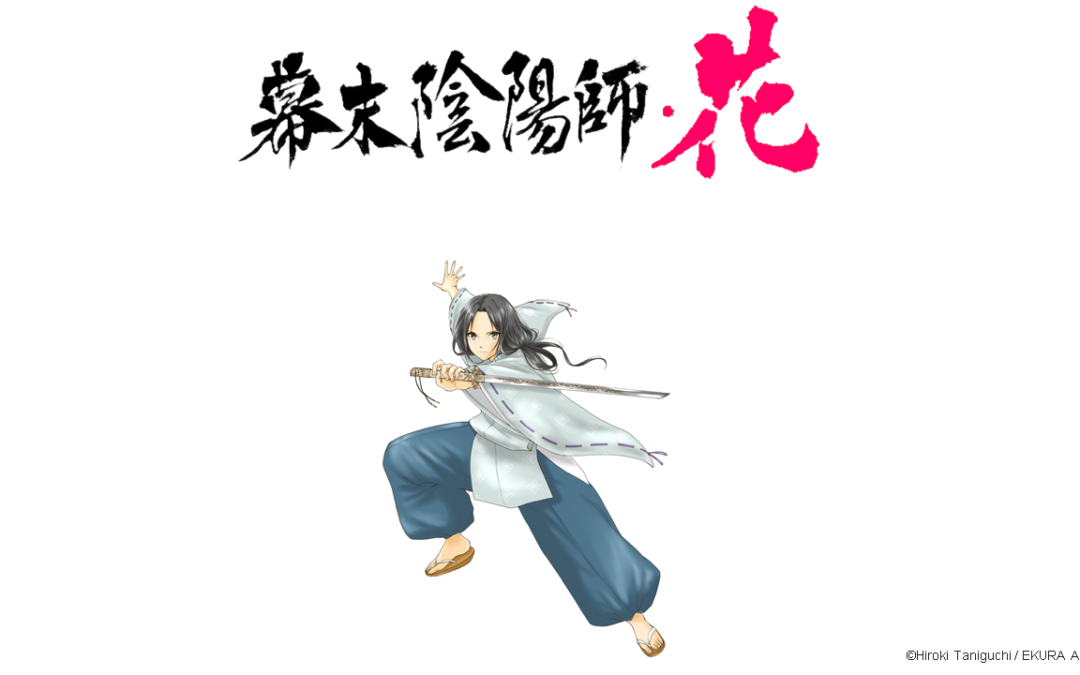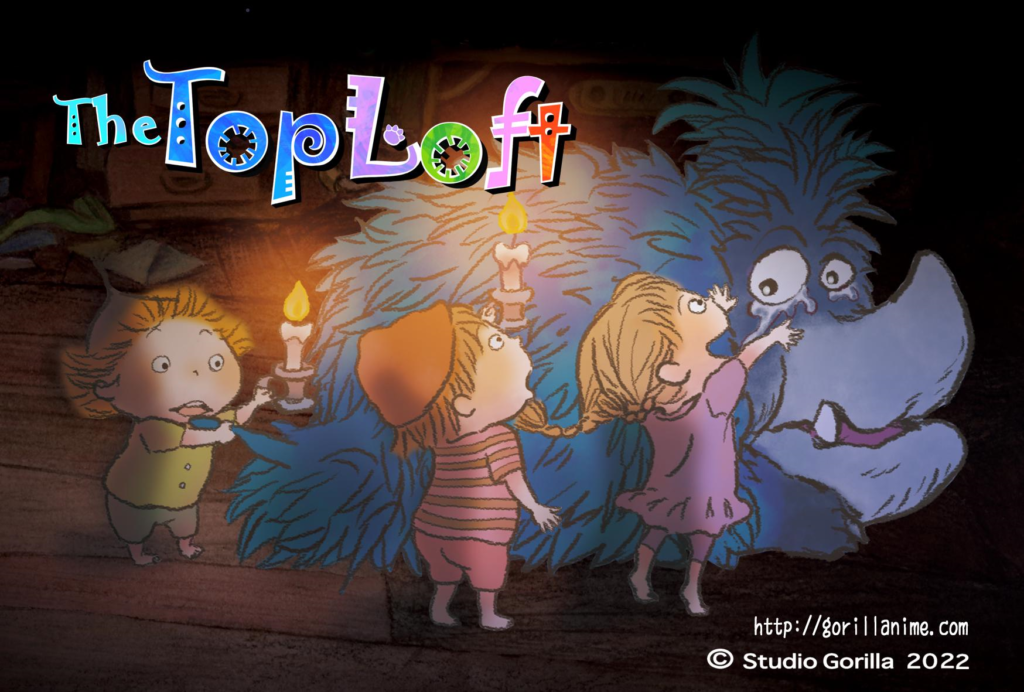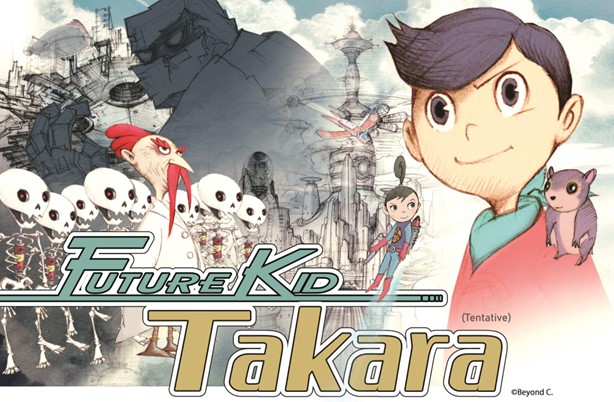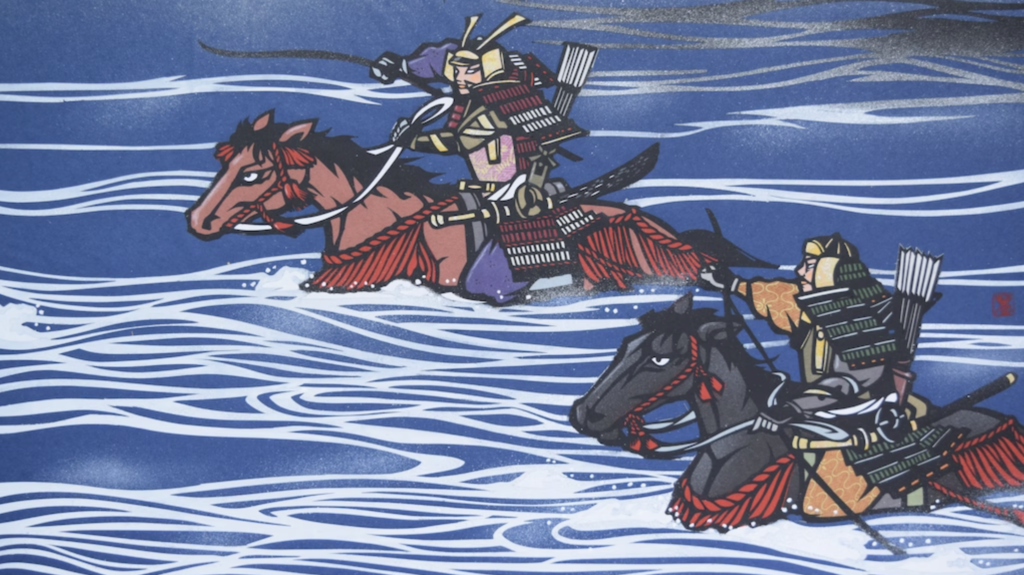Hiroki Taniguchi is an independent anime and film producer and director who is the head of the studio Public Arts, a tiny company as it has only one permanent member: himself.
Mr. Taniguchi has been selected to participate in the ongoing initiative by JETRO aiming to help independent anime studios organize their crowdfunding campaigns. You can read more about the other campaigns supported by the initiative here.
Public Arts project is the anime series Hana, the Last Diviner, which follows the story of a young girl who becomes a powerful diviner, called onmyôji in Japanese. Hiroki Taniguchi has already written the novel version of Hana, which he aims to adapt as an anime and a live-action series.
In our interview with him, Hiroki Taniguchi delves deeper into the production process behind Hana, the Last Diviner, and how it sets itself apart from traditional anime production methods.
Mr. Taniguchi, thank you very much for this interview. First, could you introduce yourself and the studio Public Arts?
Hiroki Taniguchi: Public Arts is like a particular company: the concept is that people make entertainment more fun without relying on big companies. We want to do a sort of revolution; that’s our concept.
And who are the other members of Public Arts?
Hiroki Taniguchi: Actually, it’s just me, but I have a strong network of animators and artists. It’s not like the old-fashioned style of making animation, which is a pyramid model: in Japan, we like to use a top-down structure, but we want to have a flat structure with more horizontality.
I precisely wanted to ask about that. Could you tell us more about this production system?
Hiroki Taniguchi: The pyramid structure is very costly: you have to hire people, have them on a salary for a long time… I prefer teamwork, something like football teams: everyone is a decision maker, and we settle things through discussion instead of waiting for the boss’s or the client’s opinion. This is slow and costly, but we don’t need something like that: the world moves very fast today, and we must adapt to that.
I see. But I suppose this “flat” system makes funding difficult, which is why you rely on this crowdfunding campaign.
Hiroki Taniguchi: Yes, in the end, we need money to make animation, but it’s complicated to get money from big companies, like Dentsu or other companies who concentrate most of the advertising. Moreover, animation and film companies are very conservative: they want to keep the existing system in place. So that’s why we’re using crowdfunding.
This campaign isn’t just aimed at Japan but at the entire world, right? What does that change?
Hiroki Taniguchi: Japanese animation is focused on the domestic market first, so they need domestic clients, and that’s where they get the money from: older, familiar clients. But we’re focusing on a worldwide market, a bit like Korean drama. Because of that, we’re trying to gather money from several countries and all types of people, so crowdfunding is a good solution.
Despite this international aspect, the work you’re presenting now, Hana, the Last Diviner, is about a very Japanese type of character, the onmyôji. What do you think is their international appeal?
Hiroki Taniguchi: Well, Hana may look very Japanese, but it’s really about astrology, which is something that exists in many countries, such as India: looking at the stars to see the future. So the story includes such international topics, as well as ideas such as God or the Earth… Moreover, the world is very chaotic right now, with war, poverty, and everything that is going on. Once, people looked towards space to get some advice, and in that sense, I think Hana is a story about something we all need.
Are there other reasons why you wanted to tell a story about onmyôji?
Hiroki Taniguchi: You know, Japanese society is very man-dominated. For example, it ranks very low in the OECD ranking regarding gender equality, and the status of women is very low. I’d like to help change the status of women through this story: Hana may be a very poor and ordinary girl, but she manages to get into the onmyô society. Just like Japanese society today, it’s dominated by men, and she wants to revolutionize that. Even though she makes many enemies, she overcomes these situations. We need equality between men and women in Japan, and I want to show this. There’s a strong social message.
Animation is often perceived as something for children, especially overseas. Do you think it’s still the best medium to tell such political messages?
Hiroki Taniguchi: Actually, I’m also making a story for children right now, so I know that the market for children’s animation is wider. On the other hand, when you look at something like Demon Slayer, which was popular worldwide, I don’t like it; precisely because it doesn’t have a strong message. Tanjirô just wants to protect his family. I want something more political – like old French animation. These movies had very strong political messages, which is why people like Hayao Miyazaki liked them so much. I think animation should be more political, especially in Japan, where we’re always very weak in delivering such messages. I want to change that style.
Another reason is that in live-action right now, the casting is awful. You only get Chinese actors or idols, so you have to negotiate a lot to meet your budget – moreover, they’re very cranky and snobbish, and I don’t like to work with them. Animation is freer in terms of casting, but drawing is indeed very hard.
I know you’ve also been directing live-action films – are there any other notable differences between live-action and animation?
Hiroki Taniguchi: Live-action is based on humans, especially human actors. So when they don’t move – for example, when they’re just listening to dialogue from another character, if the acting is good enough, you can imagine their story or background. For example, Ken Takakura just has to stand, and you can already imagine many stories. On the other hand, animation is just pictures. You may see the main character of One Piece, but you can’t imagine his story – you just recognize him as an anime character.
That’s why animation needs more dialogue. Of course, there’s some silent animation, but overall you need more dialogue to explain the situation to the audience, whereas with live-action, if the actor is very good, just having them stand is enough.
But don’t you think that good animators are just like good actors? Can’t they express the same things that actors do through techniques such as timing?
Hiroki Taniguchi: Yes, I think so. For an animator like Miyazaki, it’s possible. Still, take something like eyes: if you see a close-up of Ken Takakura’s eyes, you can imagine and see something in them, but I don’t think you can see such tiny things in animation. But you’re right; maybe an animator as talented as Miyazaki could manage such things.
Yes, I see what you mean. When you’re filming real people, there’s an intention, but the camera also picks up things you didn’t intend. But since animation is made of drawings, you have to think about everything, and you can only show what you thought of.
Moving back to your project, the story takes place at the end of the Edo period. But when we think of onmyôji, it’s rather the Heian period that comes to mind. Why did you make that choice?
Hiroki Taniguchi: As you know, in France, they say that art is a metaphor for our modern society. So I depicted the end of Edo, but it’s very similar to contemporary Japan. I think it’s in decline, just like Edo society back then. When I researched that period, I found a lot of similar phenomena, which is why I’m very interested and passionate about how to represent it.
Onmyôji are famous in Japanese pop culture. Did you use any specific inspiration from movies or anime?
Hiroki Taniguchi: Actually, no. It’s very funny: there are so many onmyôji stories in Japan, but they’re mostly based on Baku Yumemakura’s works. I don’t know why, but his onmyôji are really popular. I read one of his novels and liked it, but it was really complicated. As for inspiration, there’s Green Destiny – it’s not about onmyôji, but I think the style is very similar to what I want to do, although I also want to add action.
We’ve been told you worked with a Kyôto Women’s University professor. Can you tell us about the help she provided?
Hiroki Taniguchi: She’s a specialist on onmyôji, especially around the end of the Edo period. We don’t know much about onmyôji at that time, so I was looking for someone knowledgeable about that, and I found her. I needed such help because most onmyôji stories are fantasy and not based on historical truth. But I wanted to deliver a message about the end of the onmyôji, so I needed more concrete elements. She gave me some data, and I went to Kyôto many times to discuss things with her, such as how they made calendars or how they died out. Thanks to that, I could brush up the scenario a lot.
Onmiyôji existed for a thousand years after the Heian period, and there were many stories and dramas. Some sound quite stupid, like how they started selling their rights to ordinary people just to keep their livelihood. It’s ironic because they were quite close to the emperor but started selling their status to farmers. So at the end of the Edo period, there were a lot of onmyôji because of that. It’s a bit like movie directors in Japan right now: there are so many of them. Today’s situation and that of onmyôji and government officials back then are quite similar; they don’t actually have a strong power.
I see… You said it was like the film industry, but what about the anime industry? Because a lot of people are saying it’s in decline and all that.
Hiroki Taniguchi: Yes. I often hear from veterans that there are too many animation directors nowadays – and just to make the same drawings over and over. But before, when they made Ashita no Joe, for example – please watch Ashita no Joe again when you have time – in each cut, Joe’s face is different. But they didn’t care about that because each animator made Joe’s face with their own strong power. Each one said, “this is my Joe,” so the audience didn’t really mind. We need more passion and more soul, not more animation directors.
I suppose you’ll focus on transmitting that passion to the other artists for this project.
Hiroki Taniguchi: Yes.
Can you tell us more about the format? Is Hana going to be a series or a movie?
Hiroki Taniguchi: If possible, I’d like to make a series because I already wrote a novel, which is still unpublished. It’s a long story that goes as far as the Meiji period: Hana’s still alive in the Meiji period.
And what will be the end result of the crowdfunding campaign?
Hiroki Taniguchi: This campaign will help us make a pilot film. Even one episode takes time; even 4 or 5 minutes of animation take time. Right now, I’m making something 60 minutes long, and it took eight months or something already. That’s because of the “flat” system I mentioned earlier. But it also has advantages: we’re very flexible, always discussing things and changing our way of doing things. Moreover, what’s very important is that it’s very easy to accept animators from other countries. I want to work with overseas artists, so I’m in the middle of negotiations right now.
Is it the first time you’re working with overseas animators?
Hiroki Taniguchi: Right now, I’m working with Chinese artists.
Is it very different from working with Japanese animators?
Hiroki Taniguchi: Foreign animators are very flexible. Japanese artists are very skillful, but they’re also very systematic. Moreover, nowadays, it’s common that some animators don’t keep the schedule, and they become impossible to hire. I have many friends who call me daily to complain about that: they have to wait until midnight, or later, for the animators to complete their work or just to come back. It’s absurd. I don’t know why the production staff must wait so long, so late. Maybe that only happens in Japan…
About Hana‘s staff, how many people do you think you’ll need? Regarding your “flat” system, will you still make a difference between key animators and in-betweeners, or will animators do everything by themselves, for example?
Hiroki Taniguchi: That’s an interesting question. Basically, today, it’s very hard to find animators in Japan because even as freelancers, most are tied to a studio. They’re busy on multiple projects for at least a few years. So it’s easier to recruit independent animators who are used to doing everything by themselves. But on the other hand, they have no experience working in a group. So I hired an animator with experience working on TV, who coordinates the others and teaches them teamwork.
Still, since they’re used to working by themselves, there are only a few people, from 5 to 10. It’s all done by the same people, from layout to in-betweens. The backgrounds are sent to another company. But it takes more time. What we need the most is time.
By the way, Mr. Taniguchi, do you have any experience as an animator?
Hiroki Taniguchi: I went to a small school to learn how to make animation, the Nuno Anijuku, at studio Pierrot: it was organized by Mr. Nunokawa, who founded the studio and produced The Wonderful Adventures of Nils and Naruto. Unfortunately, he passed away this week. I learned a lot from his classes. Sometimes the director from Naruto would come to teach classes.
But since I’m mostly coming from live-action, I still have a lot to learn. Animation is more systematic, whereas you can be more variable in live-action. Animation can be made with just 5 or 10 people if they’re strong enough. That’s why my project is probably more challenging than the others in this campaign: we’re so small. That’s why I need fans, as well as animators, who can join our project.
That’s what I’d like to say: now, the Japanese market is growing smaller. We need a bigger market: look at Indonesia, for example, there are so many children there! I want to focus on other countries. But for that, we need something new because the Japanese way of doing things is very conservative and slow.
That’s encouraging. I hope it will work out!
Hiroki Taniguchi: Anyone can accept things like space, God, or Earth. We have to look towards those and find new ways.
We wish to thank Mr. Taniguchi for his time and the JETRO Marketing division for their help in organizing this interview.
Interview by Matteo Watzky and Dimitri Seraki, transcription by Emilia Hoarfrost.
You might also be interested in
From picture books to animation: Noko Yukawa & Studio Gorilla [JETRO x Kickstarter]
Studio Gorilla is a small studio with a long history. As is often the case in the anime industry, its creators are fueled by simple things: love and passion. With these, they have participated in a variety of projects aimed at children, which have always been their...
Looking for a Japanese new CG: Yuta Sano & Studio 4°C [JETRO x Kickstarter]
Studio 4°C is one of the most famous animation companies in Japan. For decades, they have created many experimental films and have acquired a passionate fandom overseas. Right now, the studio is embarking on a new project which will require the help of such fans -...
Old and New: Ekura Animal’s Heike Monogatari – Interview with Hitomi Toyonaga [JETRO x Kickstarter]
Ekura Animal, or Eclat Animal, is an animation studio with a long history: created in the early 1980s, its roots go back to the very beginnings of Japanese animation and the students of one of anime's greatest artists, Yasuo Otsuka. At Full Frontal, we have known...





Trackbacks/Pingbacks